Hello, lovely moms-to-be! Today, we’re diving into the wonderful world of prenatal yoga, a practice that has been shown to enhance the well-being of both mother and baby. As I write this, I’m 22 weeks pregnant, I’m filled with excitement and a bit of nostalgia for my own journey. Did you know that recent studies have shown that women who practice prenatal yoga are likely to shorten their labor duration to 2 hours on average? Isn’t that incredible? Together let’s explore how this gentle yet powerful practice can support a healthy and joyful pregnancy journey.
Table of Contents
- What is Prenatal Yoga?
- Difference Between Normal Yoga and Prenatal Yoga
- Best Time to Start Prenatal Yoga during Pregnancy
- Benefits of Prenatal Yoga for Mother and Baby
- Prenatal Yoga Poses for Every Trimester
- How to Practice Prenatal Yoga at Home?
- Prenatal Yoga Apps for Pregnant Women
What is Prenatal Yoga?

It is a form of yoga designed specifically for pregnant women. It includes gentle stretches, breathing exercises, and relaxation techniques that cater to the changing needs of your body during pregnancy. The main goal is to prepare you physically, mentally, and emotionally for labor and motherhood.
Difference Between Normal Yoga and Prenatal Yoga
Before diving into the details of prenatal yoga, it’s essential to understand how it differs from regular yoga. While traditional yoga focuses on overall fitness and flexibility, this yoga is for the unique needs of expectant mothers. Here’s a quick comparison:
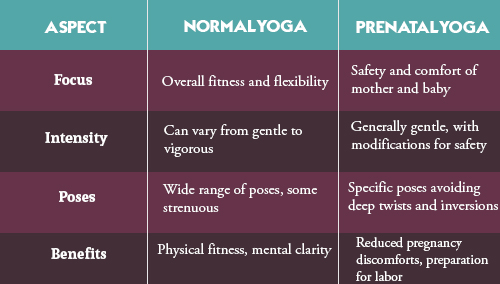
Best Time to Start Prenatal Yoga during Pregnancy
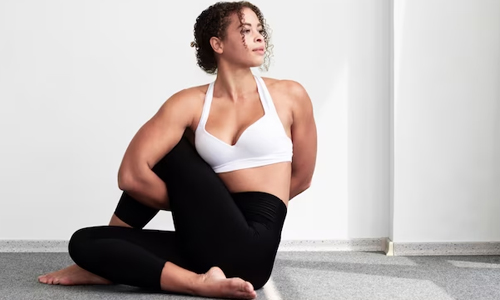
Hope you can able to differentiate the normal yoga and prenatal yoga. Now, you might be wondering, “When is the best time to start pregnancy yoga?” The answer is as soon as you feel ready! But, most experts recommend beginning prenatal yoga after your first trimester (around 14 weeks). By then, your morning sickness starts easing up and you’re starting to feel more energetic. However, always consult with your healthcare provider before starting any new exercise routine. You’ve got this, mommies!
Benefits of Prenatal Yoga for Mother and Baby
These benefits will help you understand why incorporating prenatal yoga into your routine can be incredibly valuable.
Physical Benefits
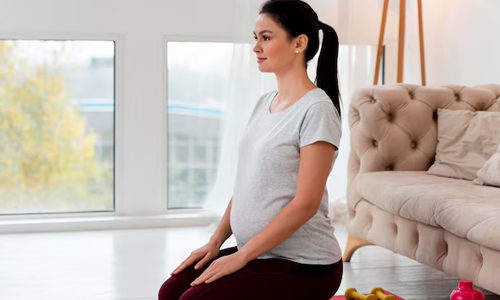
One of the primary physical benefits of prenatal yoga is the enhancement of flexibility, strength, and endurance. These aspects are crucial as your body undergoes many changes during pregnancy. Here’s how:
- Flexibility: It is essential as your body adapts to accommodate your growing baby. Gentle stretching can alleviate tension and prevent stiffness, making daily movements more comfortable.
- Strength: Strengthening your muscles, particularly in the core, back, and pelvic region, can support the additional weight of pregnancy. This strength is not only important for carrying your baby but also for labor and delivery.
- Endurance: Labor can be physically demanding. Regular yoga practice can enhance your endurance, preparing you for the effort of childbirth.
Imagine having the stamina to handle the physical demands of labor while feeling strong and capable—pregnancy yoga can help you get there.
Mental and Emotional Benefits
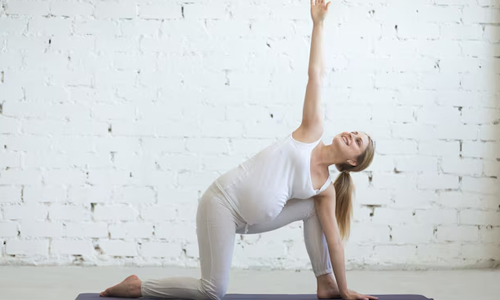
Pregnancy can be a time of emotional highs and lows. Prenatal yoga provides significant mental and emotional benefits that can help you navigate this journey with greater ease:
- Stress Reduction: Yoga encourages relaxation and stress relief through deep breathing and mindfulness practices. These techniques can help you manage anxiety and maintain a sense of calm.
- Improved Mood: The combination of physical activity and relaxation can boost your mood. Regular practice releases endorphins, the body’s natural mood lifters, promoting a sense of well-being.
- Better Sleep: Many pregnant women struggle with sleep disturbances. This yoga can help you unwind and relax, leading to improved sleep quality.
Consider it a mini-vacation for your mind. A calm and happy mom contributes to a happy and healthy pregnancy.
Impact on Baby’s Health

And for your baby? A relaxed happy mama often means a happy baby!
- Healthy Fetal Development: The gentle movements and deep breathing increase blood flow and oxygen supply, promoting healthy fetal development. Your baby receives better nourishment through improved circulation.
- Smoother Delivery: pregnancy yoga prepares your body for labor by strengthening the muscles used during childbirth and enhancing your ability to stay calm and focused. This can contribute to a smoother, more manageable delivery experience.
So, roll out your yoga mat, take a deep breath, and embrace this wonderful practice!
Prenatal Yoga Poses for Every Trimester
Ready to try some poses? Here are some gentle and effective pregnancy yoga poses for each trimester, along with their benefits. Remember, always listen to your body and avoid any poses that cause discomfort.
First Trimester Poses
1. Cat-Cow Pose (Marjaryasana-Bitilasana)
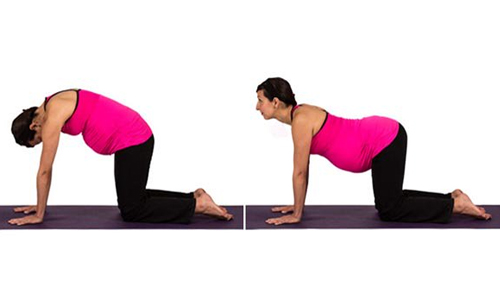
How to Do It: Start on your hands and knees in a tabletop position. Inhale as you arch your back and lift your head and tailbone (Cow Pose). Exhale as you round your back, tucking your chin and tailbone (Cat Pose).
Benefits: This gentle flow helps to stretch the spine, alleviate back pain, and improve circulation. It’s also great for relieving morning sickness and promoting relaxation.
2. Child’s Pose (Balasana)
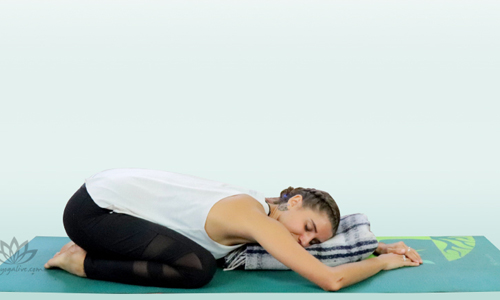
How to Do It: Kneel on the floor, touch your big toes together, and sit on your heels. Separate your knees about hip-width apart, then fold forward, extending your arms in front of you and resting your forehead on the mat.
Benefits: Child’s Pose is deeply relaxing and helps to stretch the hips, thighs, and ankles. It’s perfect for calming the mind and reducing stress, making it a go-to pose during the first trimester.
3. Standing Forward Bend (Uttanasana)
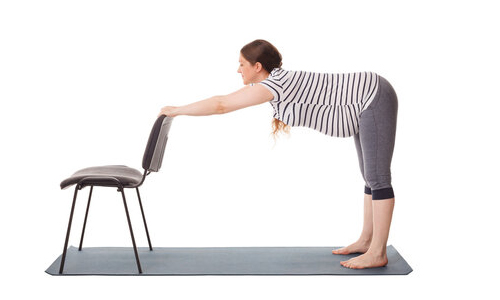
How to Do It: Stand with your feet hip-width apart. Hinge at your hips and fold forward, allowing your arms to hang or hold onto opposite elbows. Bend your knees slightly if needed.
Benefits: This pose helps to stretch the hamstrings, calves, and lower back. It also encourages blood flow to the brain, which can help lessen headaches and fatigue common in early pregnancy.
Second Trimester Poses
1. Warrior II (Virabhadrasana II)
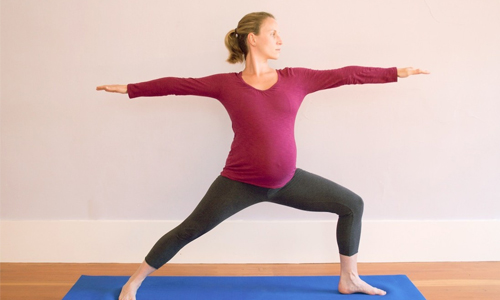
How to Do It: Stand with your feet wide apart. Turn your right foot out 90 degrees and your left foot slightly in. Extend your arms out to the sides at shoulder height. Bend your right knee, keeping it directly over your ankle, and gaze over your right hand.
Benefits: Warrior II strengthens the legs, opens the hips, and improves balance. It’s a powerful pose that can help build stamina and confidence during the second trimester.
2. Triangle Pose (Trikonasana)
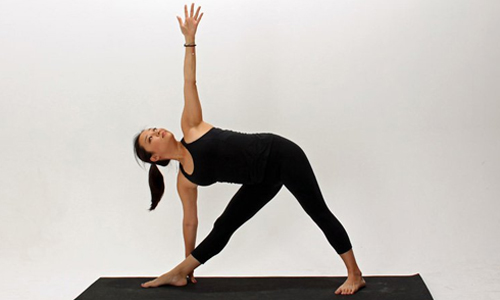
How to Do It: Stand with your feet wide apart. Turn your right foot out 90 degrees and your left foot slightly in. Extend your arms out to the sides at shoulder height. Reach forward with your right hand, then lower it to your shin, ankle, or the floor, and extend your left arm toward the ceiling.
Benefits: Triangle Pose stretches the legs, hips, and spine while opening the chest. It also helps improve digestion and can relieve backache, a common issue in the second trimester.
3. Extended Side Angle Pose (Utthita Parsvakonasana)
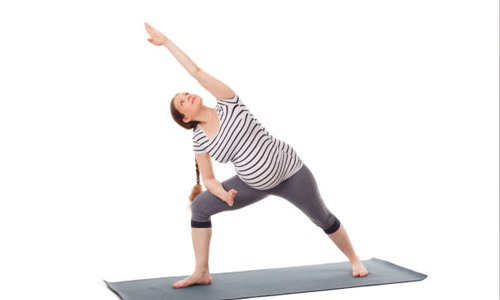
How to Do It: From Warrior II, lower your right hand to the inside or outside of your right foot and extend your left arm over your head, creating a diagonal line from your left foot to your left fingertips.
Benefits: This pose stretches the groin, spine, waist, chest, and shoulders. It also strengthens the legs and promotes better balance and stability.
Third Trimester Poses
1. Garland Pose (Malasana)
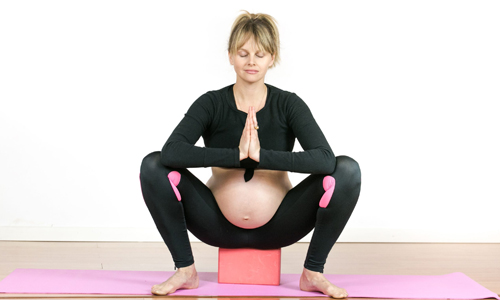
How to Do It: Stand with your feet wider than hip-width apart. Squat down, bringing your hips as close to the floor as possible. Bring your palms together at your chest and press your elbows against the inside of your knees.
Benefits: Garland Pose opens the hips and groin, strengthens the legs, and can help prepare your body for labor. It also promotes flexibility and relaxation in the pelvic area.
2. Pelvic Tilts
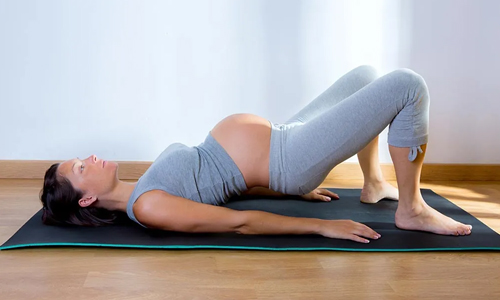
How to Do It: Lie on your back with your knees bent and feet flat on the floor. Inhale, then exhale as you gently tilt your pelvis upward, pressing your lower back into the floor. Inhale as you return to the starting position.
Benefits: Pelvic tilts help strengthen the abdominal muscles, reduce lower back pain, and improve pelvic floor health, which is essential for childbirth.
3. Savasana (Corpse Pose) with Props
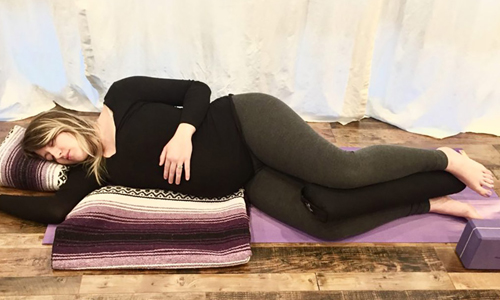
How to Do It: Lie on your left side with a bolster or pillow between your knees and another supporting your head. You can also place a pillow behind your back for additional support.
Benefits: Savasana promotes deep relaxation and stress relief. Using props ensures comfort and safety, helping to alleviate tension and improve overall well-being in the final weeks of pregnancy.
These poses are designed to support you through each stage of your pregnancy, promoting physical health and emotional well-being. Enjoy your practice and embrace this special time in your life!
How to Practice Prenatal Yoga at Home?

Practicing pregnancy yoga at home is convenient and comfortable. Here’s how to get started:
Setting Up a Home Yoga Space: Choose a quiet, comfortable space with enough room to move freely. Ensure it’s well-ventilated, has soft lighting, and is free from distractions. This will help you relax and focus on your practice.
Essential Equipment and Props: Gather a yoga mat for a non-slip surface, blocks to assist with poses, bolsters for support, and straps to help with stretching. These props make your practice safer and more comfortable, accommodating your growing belly.
Prenatal Yoga Apps for Pregnant Women
For guided practice, consider these top prenatal free yoga apps that are available for both iOS and Android users:
- Yoggy
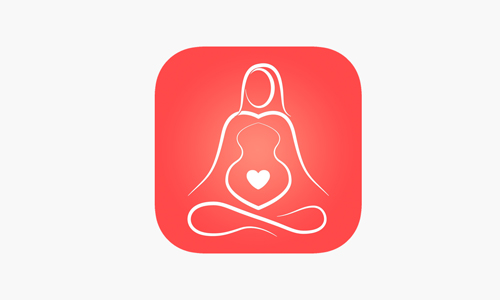
This app offers a daily yoga routine designed to support a healthy pregnancy. Created by mothers for mothers-to-be, it provides a unique opportunity to stretch, tune into your body, and bond with your baby. The workout features seven easy exercises and takes just 10 minutes to complete.
- Down Dog

Offers customized yoga practices tailored to your trimester and preferences. It includes a variety of yoga styles, and lengths, and focuses on safe and effective poses for each stage of pregnancy.
- Baby2Body

Provides personalized fitness and wellness coaching for pregnant women. It includes pregnancy yoga, strength training, and mindfulness exercises. The content is designed to keep you fit and healthy throughout your pregnancy.
Each of these apps provides valuable resources and guidance for pregnancy yoga, helping you stay active, relaxed, and prepared for the arrival of your little one. Enjoy exploring these options and finding the one that best fits your needs!
Precautions for Prenatal Yoga Practice
Safety is paramount in prenatal yoga. So, keep the following precautions in mind whenever you practice yoga.
- General Safety Tips: Always warm up before starting, stay hydrated, and avoid overheating.
- When to Avoid Certain Poses: Avoid poses that compress the abdomen or involve deep backbends and inversions.
- Consulting with Healthcare Providers: Always check with your doctor before starting or continuing a yoga practice during pregnancy.
- Finding a Supportive Community: Join pregnancy yoga classes or online forums to connect with other expectant mothers.
Personal Stories and Experiences with Prenatal Yoga
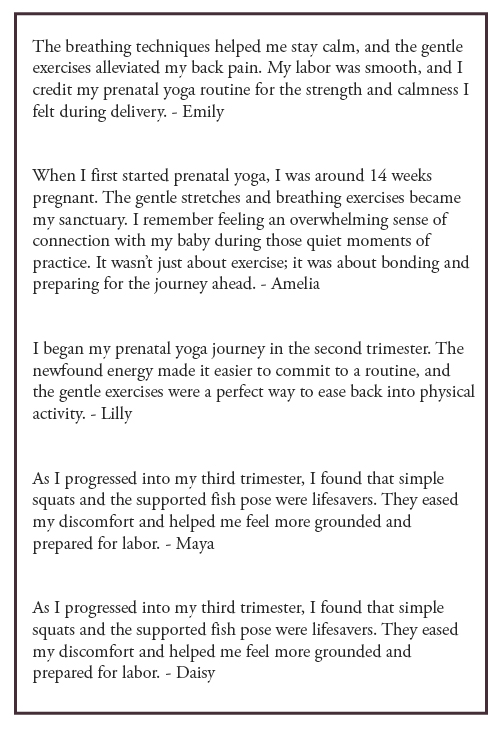
Conclusion
As we wrap up, prenatal yoga is a wonderful way to support a healthy pregnancy, both physically and emotionally. From reducing stress to preparing your body for childbirth, the benefits are immense. So, embrace this journey by listening to your body, and enjoying every moment of your pregnancy yoga practice. Share your experiences, ask questions, and let’s support each other through this beautiful time. Happy practicing, and congratulations on this beautiful chapter of your life!
FAQ :
1) When should you start prenatal yoga?
You can start prenatal yoga after the first trimester, around 12-14 weeks, when morning sickness subsides and energy levels improve, with your doctor’s approval.
2) What is the difference between prenatal yoga and regular yoga?
Prenatal yoga focuses on poses safe for pregnancy, emphasizing pelvic floor strength and relaxation, while regular yoga includes a wider range of poses and intensity.
3) What are the disadvantages of prenatal yoga?
Disadvantages of prenatal yoga can include potential strain from improper poses, the need for modifications, and possible discomfort if not guided by a trained instructor.
4) Which yoga is best in pregnancy?
Hatha yoga and prenatal yoga are best during pregnancy. They focus on gentle stretches, breathing exercises, and relaxation, promoting comfort and safety for both mother and baby.
5) Is prenatal yoga good for baby?
Yes, prenatal yoga is beneficial for the baby. It improves blood flow, reduces stress, and promotes a healthy environment in the womb, contributing to overall fetal well-being.
Linda
Related posts
Women Tips
Privacy Overview
| Cookie | Duration | Description |
|---|---|---|
| cookielawinfo-checkbox-analytics | 11 months | This cookie is set by GDPR Cookie Consent plugin. The cookie is used to store the user consent for the cookies in the category "Analytics". |
| cookielawinfo-checkbox-functional | 11 months | The cookie is set by GDPR cookie consent to record the user consent for the cookies in the category "Functional". |
| cookielawinfo-checkbox-necessary | 11 months | This cookie is set by GDPR Cookie Consent plugin. The cookies is used to store the user consent for the cookies in the category "Necessary". |
| cookielawinfo-checkbox-others | 11 months | This cookie is set by GDPR Cookie Consent plugin. The cookie is used to store the user consent for the cookies in the category "Other. |
| cookielawinfo-checkbox-performance | 11 months | This cookie is set by GDPR Cookie Consent plugin. The cookie is used to store the user consent for the cookies in the category "Performance". |
| viewed_cookie_policy | 11 months | The cookie is set by the GDPR Cookie Consent plugin and is used to store whether or not user has consented to the use of cookies. It does not store any personal data. |

